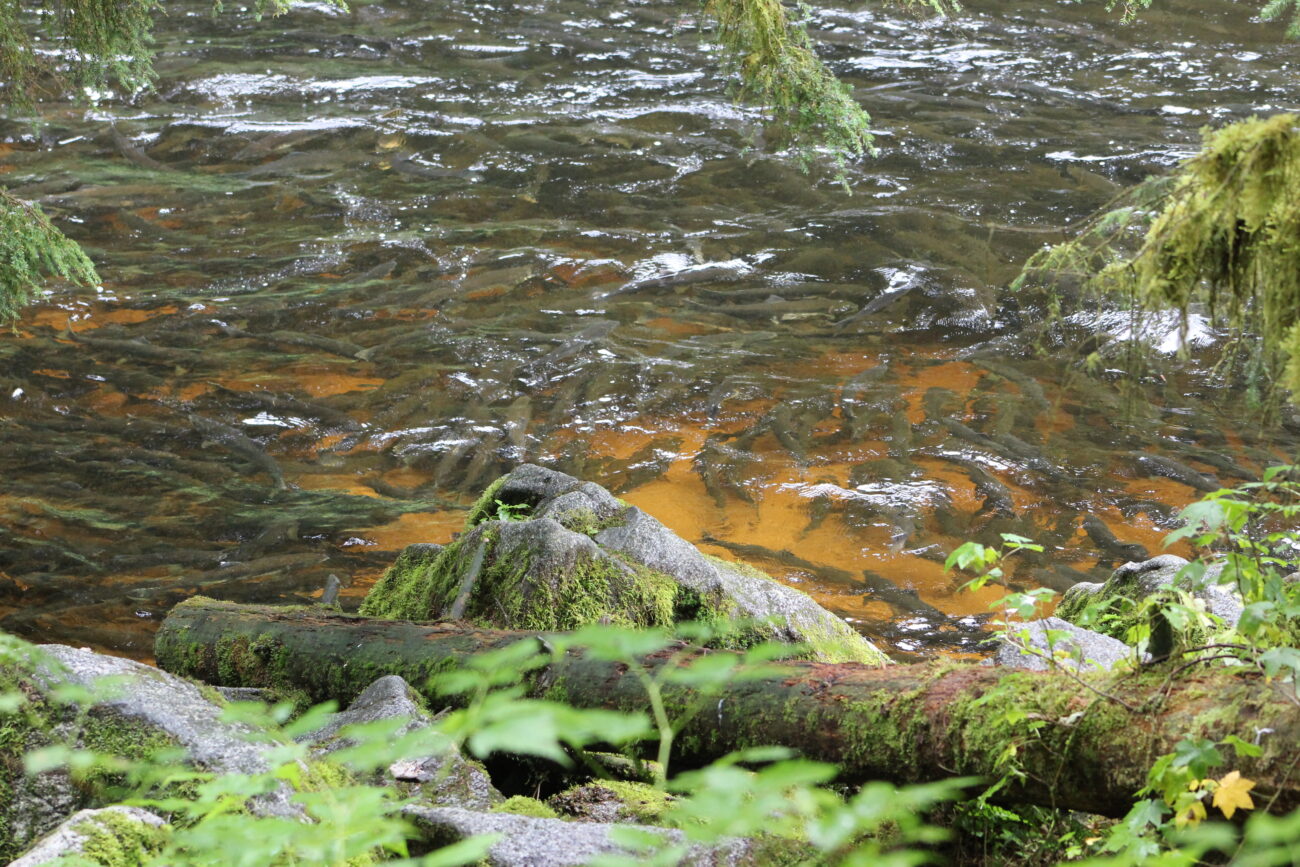
About thirty years ago, the state said Alaskans ate approximately 6.5 grams of fish per day. That’s not much – just about the size of a nickel. That was the U.S. Environmental Protection Agency’s national default rate back then.
But the amount of fish Alaskans consume isn’t really known because the state hasn’t updated its fish consumption rates. This matters because it affects the amount of contaminants allowed in Alaska’s waterways. Nonetheless, a Southeast tribe has been trying to figure out that number for its community.
In June, the EPA sent the state a letter requesting an update.
The federal agency published a study that says the national fish consumption rate is 22 grams a day. For subsistence use it’s a lot more, around 142 grams a day. The discrepancy between these figures really matters to the Wrangell Cooperative Association’s Tribal Administrator Esther Aaltséen Reese.
“It’s very important because the amount of pollutants that are allowed in our oceans and our waterways here in Alaska are determined by the rate of consumption of fish and also the amount of water,” she said.
Protecting lands, waterways and people
Reese is also president of the Southeast Alaska Indigenous Transboundary Commission, which is a consortium of 17 tribes that advocate for protecting their lands and waterways from the ill effects of mining and other causes of pollutants.
Reese said the consortium has been putting together a fish consumption survey, funded by a Bureau of Indian Affairs Tribal Climate Resilience grant of $130 thousand.
The federal government wants to figure out the current “human health criteria” or what’s the maximum amount of a pollutant allowed in a waterbody without it posing a health risk. Part of the equation is how much fish people are eating. If fish consumption is high, then the amount of pollutants in water need to decrease.
To comply with the EPA, the state has until next June to update its fish consumption rate.
“We want to be sure that seafood stays uncontaminated and healthy…”
So, the Southeast tribal coalition will be sending out a fish consumption survey to Wrangell tribal members to get a better idea of how much fish people eat daily. Reese said they hope to have at least 86 people take the survey to get a good representation of the community.
“What I would like to encourage our Wrangell tribal citizens to do is if you receive a phone call asking you to complete this survey, please do it,” she said. “It can directly impact the health of our waterways. It can directly impact the health of salmon.”
Guy Archibald, executive director of SEITC, has been working on the survey for the past three years.
He said it counts more than just fin fish. It asks about shellfish, beach greens, marine mammals, basically anything from the water that could be contaminated.
“What we want to see is people eating more healthy seafood and we want to be sure that seafood stays uncontaminated and healthy for the long term,” he said. “That means being sure that the amount of pollutants that are allowed into our water is as low as possible.”
There’s three parts to the survey – a 24-hour recall of what someone ate, how much a person eats a certain seafood, and why someone is not eating a specific seafood.
Roadblocks over the last few years
While piecing together the survey, Archibald experienced many roadblocks, including the changing of the law when it comes to surveys.
“Before, a survey was like, somebody stops you on the street with a clipboard. ‘Hey, can I ask you a few questions?’ You [say], ‘a few questions? Yeah, no problem,'” he said. “Well, they changed the law and it’s a good thing to protect people’s data security, to protect their legal liabilities, to protect, you know, on and on and on. So they made the law a lot stricter.”
So he had to put safeguards in place to comply with the federal laws, like the Health Insurance Portability and Accountability Act.
Other tribal governments in the state and nationwide have conducted similar fish consumption surveys. The Sun’aq Tribe of Kodiak completed a survey in 2019 that concluded that participants ate a half pound of seafood per day. Four member tribes of the Columbia River Intertribal Fish Commission conducted an earlier survey in the ‘90s. This was significant because they realized the water quality criteria was not protective of their citizens who eat a lot of fish.
During that time, they found that tribal members ate six to 11 times more fish than the EPA’s national average at 6.5 grams of fish.
Because of this, Oregon changed their fish consumption rate to 175 grams per day while protecting their waters from contaminants.
“It’s going to be up to the tribes to protect the health of their tribal citizens which is what tribes do,” Archibald said. “They’re again leading the charge here.”
The Southeast tribal coalition will be surveying Wrangell residents for about a year to get more of an accurate idea of how much seafood people eat throughout the seasons. They estimate that the final report will be complete around November 2025.
And there’s immediate incentive too – each participant will receive a $50 gift certificate to a local business.











